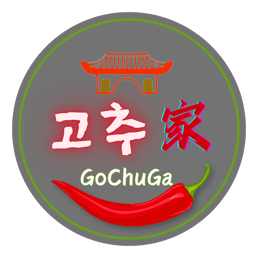Korean GoChuGaRu vs. Chinese GoChuGaRu: What's the Difference?
key differences between Korean and Chinese gochugaru, from origin and quality to processing and safety.
HISTORY
Gochuga
2/20/20253 min read


Recently, many chili powder products on Amazon and other online marketplaces in the U.S. appear to be Korean due to Korean-language packaging. However, a significant number of these products actually contain chili peppers grown in China but processed and packaged in Korea. In reality, they are Chinese chili powder, not authentic Korean chili powder. To truly capture the essence of Korean cuisine, it is essential to use chili powder made from chili peppers grown in Korea.
1. Differences in Quality by Origin
One of the most critical factors determining chili powder quality is its origin. Korean chili peppers are cultivated in a clean environment under strict standards. Korea’s soil and climate are optimal for growing chili peppers, resulting in a unique depth of flavor and spiciness. In contrast, Chinese chili peppers are often mass-produced with excessive use of pesticides and chemical fertilizers, and some regions suffer from significant soil pollution.
Korean chili powder undergoes rigorous pesticide residue and heavy metal testing, ensuring only safe and high-quality products reach the market. In comparison, Chinese chili powder is subject to less stringent regulations, and cases of contamination with heavy metals or harmful substances have been reported.
2. Differences in Processing Standards
The quality of chili powder is influenced not only by raw materials but also by the processing methods. Korean chili powder is processed in hygienic facilities under strict quality control. Many manufacturers hold HACCP (Hazard Analysis and Critical Control Points) certification, ensuring impurities are removed and the natural taste and aroma of the chili peppers are preserved.
On the other hand, Chinese chili powder is often produced with mass production in mind, leading to lower hygiene standards. There have been instances where Chinese chili powder was found to contain mold toxins (mycotoxins) or carcinogenic substances, raising concerns about its safety.
3. Price Differences and the Reasons Behind Them
Korean chili powder is 2 to 3 times more expensive than its Chinese counterpart. This price difference is due to the high-quality cultivation, clean processing facilities, and stringent inspections that ensure food safety. Consumers can trust Korean chili powder to be a premium product with superior safety and taste.
Meanwhile, Chinese chili powder is cheaper due to lower production costs and mass distribution. However, considering quality and safety, choosing chili powder solely based on price can be risky.
4. Why Authentic Korean Chili Powder Matters for Korean Cuisine
Chili powder is a crucial ingredient in Korean cuisine, used in kimchi, gochujang (Korean chili paste), tteokbokki (spicy rice cakes), stews, and more. To achieve authentic flavors, it is essential to use Korean chili powder. Korean chili powder doesn’t just add heat—it also brings depth and umami that enhance the overall taste of dishes.
In contrast, Chinese chili powder often lacks this complexity, offering only a strong spiciness without the characteristic rich flavors. If you want to experience real Korean cuisine, checking the origin and choosing authentic Korean chili powder is a must.
5. How to Choose the Right Korean Chili Powder
When buying Korean chili powder, always check the country of origin. Look for labels that say “100% Korean chili peppers” or “Made in Korea” with verified certifications. Examining product origin marks or testing reports can further ensure reliability.
Particularly on platforms like Amazon, even if a product has Korean packaging, it may still contain Chinese-grown chili peppers. Always verify the detailed product information to ensure you are purchasing authentic Korean chili powder.
Conclusion
Korean and Chinese chili powder differ significantly in origin, quality, processing methods, and price. Korean chili powder is cultivated under strict regulations, ensuring safety and a deep, rich flavor, while Chinese chili powder is cheaper but often lacks quality and safety assurance.
If you are passionate about authentic Korean cuisine, don’t just consider price—carefully check the origin and quality to select genuine Korean chili powder. Choosing the right chili powder will ensure your dishes taste as they should, bringing out the true essence of Korean flavors!
